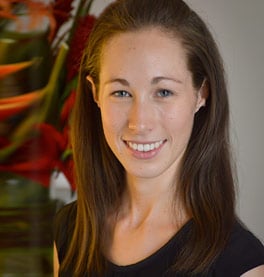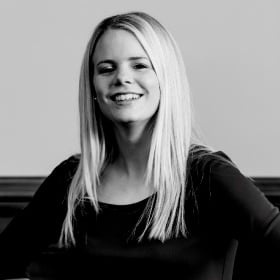At a recent dinner party, I met Melbourne residents Masha Lewis and Miranda Weiss. Complete strangers five months ago, the pair are now firm friends. This in itself is not unusual; what makes their story interesting is that what brought them together was a genetic similarity found in their saliva.
Masha and Miranda used 23andme, an at times controversial web-based service that analyzes the DNA of its thousands of users. The process is straightforward: You order a kit online and it arrives by mail to your house; then you register online, spit in a test tube, and send it back in the prepaid packaging for analysis. That's when things get interesting.
The site claims that once their DNA is in the system users will discover things about their distant ancestors, close family members, and, most of all, themselves. For example, Masha found that according to her genetic sequencing she is 99.5 percent European, with 70.4 percent of that being Ashkenazi Jew and 2.7 percent Neanderthal (the European average).
For Miranda, who is of mixed race, determining her genetic makeup was a big reason to sign up. Miranda's mother's ancestry is nearly 100 percent Ashkenazi Jewish, and she is able to name her relatives back several generations. Her father's side of the tree is more complicated—she knew there was African American in there, and possibly Native American, Irish, and even the Igbo tribe of Nigerian Jews. "I've never known exactly what races I had in me," she said. "Now I am finally able to know who I am."

23andMe also claims that predispositions to health conditions can be found through its DNA analysis, although this has been disputed. Masha was able to find out she had potentially elevated risks for psoriasis, breast cancer, and arthritis—and decreased risks for Alzheimer's, glaucoma, and multiple sclerosis. Miranda, who has a history of breast cancer in her family, confirmed her suspicions of having a higher than average risk to develop the condition.
But it's the potential for finding unknown relatives that is perhaps most exciting for potential users. Through its growing database, 23andme can match individuals sharing common genetic ancestry, as it did for our two dinner party guests.
Miranda first messaged Masha through 23andme in December 2013 requesting to share ancestry information after 23andme indicated that they were third or fourth cousins. (You can only see other people's detailed information if they've opted to share that with you.) Masha noticed on Miranda's profile that she lived in Melbourne and asked her where specifically and what her story was.
Fast-forward to August 2014, when Masha had been in Melbourne for about a month and decided to messaged Miranda letting her know she was around. That resulted on an invite to personally meet one another. "I guess in the back of my mind I was thinking I hope this girl's not a weirdo, but since I had just moved to a new country I was eager to make new friends", said Masha.
"Miranda seemed like a great person, and I wanted to be her friend immediately after meeting her," she continued. "We talked about where we've lived, how we met our husbands, mutual friends, and our dislike of Nicolas Cage. Everyone I've told about this experience has nothing but positive things to say. I think we may have even convinced a few other people to get their DNA tested."
Nowadays Masha and Miranda consider one another their closest friends in Melbourne and (physically) hang out at least once every week.
Considering the current ubiquity of social media platforms, genetics-based networks could become the next chapter of the digital revolution. Twitter, Instagram, and Vine allow us to share things with the internet at large; Facebook lets us "friend" people we barely know—but what if there were a social network that could discover strangers who were also family members? Would that give us the sense of making realer, more empathetic connections?
According to psychiatrist Robert Jay Lifton, "Our capacity to live in community is affirmed by our capacity to feel empathy, to think and feel as if we were in someone else's mind." In the past, churches, universities, artistic collectives, unions, and sports clubs—all endeavors where face-to-face exchanges are required—constituted the basis of social trust. Without them, people become alienated and lack the trust to relate to one another. In the internet age it's easier than ever to form weak bonds with people through IMs and social media, but it's hard for those bonds to turn into real friendship.
What allowed Masha's and Miranda's first encounter to evolve into an actual relationship was real-time physical proximity, of course, which was more good luck than a conscious plan. But perhaps there's something about that genetic connection—the old-fashioned tie of blood—that made their friendship deepen and emerge from cyberspace to become something real. If so, it's possible that 23andme can do some real good in the world.
Maybe Masha explains the benefits of genetic networking and the forging of new relationships best. Grinning, she told me "a fat inheritance from some distant uncle would have been nice, but I'll settle for Miranda."
*This post was originally published on VICE.



